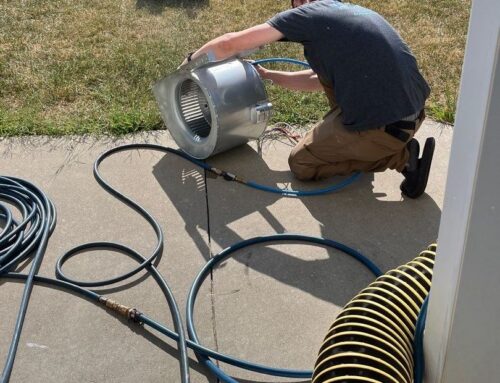Maintaining a healthy home environment goes beyond indoor air quality (IAQ); it’s also about understanding how outdoor air quality affects the air inside your home. Many people don’t realize that the quality of the air outside can have a significant impact on what you breathe indoors. Here’s a detailed guide to how outdoor air influences your indoor environment, how to effectively measure IAQ, and actionable steps to ensure your indoor air stays clean and healthy.
How Outdoor Air Quality Affects Indoor Air
Pollutant Infiltration: Outdoor pollutants such as pollen, dust, and vehicle emissions can enter your home through open windows, doors, and even tiny gaps. These pollutants can mix with your indoor air, worsening respiratory issues and allergies.
Humidity and Mold: High humidity levels outside can lead to elevated indoor humidity, which encourages mold growth and other moisture-related problems.
City vs. Suburban Living
- Urban Areas: Cities typically experience higher pollution levels due to dense traffic, industrial activities, and construction. As a result, urban homes are more likely to have significant levels of outdoor pollutants infiltrating their indoor air. The “heat island effect” in urban areas can also trap heat and pollutants, exacerbating indoor air quality issues.
- Suburban Areas: While suburbs generally have lower levels of industrial pollution, they may experience higher levels of pollen and allergens from nearby green spaces and gardens. However, less traffic congestion means fewer vehicle emissions affecting indoor air quality.
How to Measure Indoor Air Quality

Monitoring IAQ is crucial for ensuring a healthy indoor environment. Here’s how you can effectively measure it:
- Air Quality Monitors: Invest in an indoor air quality monitor to track pollutants such as particulate matter, volatile organic compounds (VOCs), and carbon dioxide (CO2). Some models even connect to smartphones for real-time updates.
- Humidity Meters: Use a hygrometer to measure indoor humidity levels. Ideally, keep humidity between 30% and 50% to prevent mold and ensure comfort.
- CO Detectors: Install carbon monoxide detectors to keep track of CO2 levels, especially if you have gas appliances like a furnace or water heater.
Practical Steps to Maintain Healthy Indoor Air Quality
Here are some practical steps to improve and maintain your home’s IAQ:
- Use Air Purifiers: Invest in air purifiers with HEPA filters to capture dust, pollen, and other airborne particles. For areas with high odors or VOCs, consider models with activated carbon filters.
- Control Humidity: Use dehumidifiers to keep indoor humidity levels in check and prevent mold growth. Proper humidity control also helps reduce dust mites.
- Improve Ventilation: Open windows when outdoor air quality is good to ventilate your home and remove stale air. Use exhaust fans in kitchens and bathrooms to reduce moisture and odors.
- Seal Gaps: Inspect and seal gaps around windows and doors to prevent outdoor pollutants from entering your home. Proper sealing helps improve indoor air quality.
- Regular Cleaning: Dust and vacuum regularly with a vacuum that has a HEPA filter. Change your HVAC filter every 30-90 days, and consider hiring a NADCA-certified professional, such as Clean Air Columbia, to clean your air ducts and HVAC system to remove accumulated dust and allergens.
- Monitor IAQ: Regularly check indoor air quality with monitors and adjust your ventilation and purification systems as needed to maintain a healthy environment.
Ensure Optimal Indoor Air Quality with Professional Cleaning
To further enhance your home’s air quality, it’s essential to consider the state of your air ducts and dryer vents. Dust and debris in these systems can aggravate indoor air quality issues by redistributing pollutants throughout your home. Clean air ducts and dryer vents help prevent the buildup of contaminants and improve the overall efficiency of your HVAC system.
Learn more about our professional air duct and dryer vent cleaning services. Our expert team is dedicated to helping you achieve the cleanest, healthiest air possible. Take proactive steps today to ensure your indoor environment remains as fresh and pollutant-free as possible!




